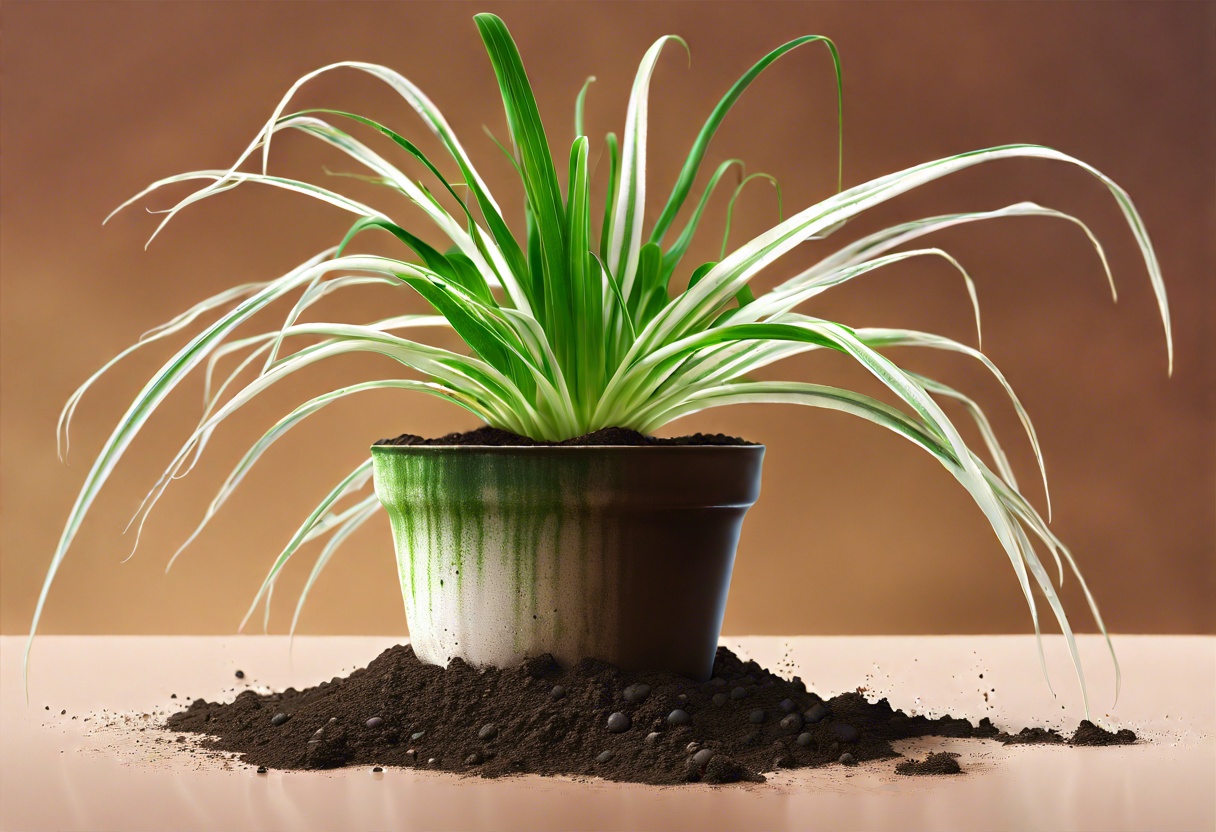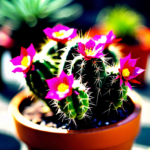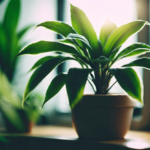The Importance of Choosing the Right Soil or Potting Mix for Spider Plants
Nurturing a spider plant (Chlorophytum comosum) requires more than just regular watering and sunlight. Choosing the right soil or potting mix is essential for the plant’s overall health and growth. Spider plants are known for their vigorous root system and the ability to propagate rapidly. Therefore, the choice of soil should provide adequate drainage, nutrient availability, and support for the plant’s development.
Spider plants prefer a well-draining soil that prevents water from pooling around their roots, which can lead to root rot. The ideal potting mix should be porous and lightweight, allowing excess water to drain away effectively. A mixture that consists of equal parts perlite, peat moss, and potting soil provides the necessary drainage while retaining enough moisture for the plant’s roots.
Another crucial aspect to consider when selecting a soil or potting mix for spider plants is the nutrient content. These plants thrive in a slightly acidic to neutral soil pH range of 6.0 to 7.0. organic matter such as compost or aged manure into the potting mix enhances its fertility and supports the plant’s nutritional requirements. Organic matter improves soil structure, increases water-holding capacity, and supplies vital nutrients to the roots.
Spider plants are also sensitive to fluoride and salt buildup in the soil. These elements can cause leaf discoloration and damage over time. To prevent this, it is advisable to use distilled or rainwater when watering spider plants. This helps minimize the accumulation of harmful substances in the soil, ensuring the plant’s long-term well-being.
The type of potting mix used for spider plants can directly impact their growth and overall appearance. A high-quality potting mix specifically formulated for houseplants can provide optimal conditions for the plant’s root system. Look for a mix that is well-balanced, with an appropriate blend of organic matter, draining agents, and nutrients.
When repotting spider plants, it is important to choose a pot that allows room for growth and has drainage holes to prevent waterlogging. Additionally, monitoring the moisture levels regularly is vital, as spider plants prefer to be on the slightly drier side rather than constantly saturated.
Selecting the right soil or potting mix for spider plants is crucial for their overall health and vigor. A well-draining mix that retains moisture, provides essential nutrients, and minimizes the risks of fluoride and salt accumulation will promote optimal growth. By choosing the appropriate potting mix and providing the necessary care, you’ll ensure your spider plant thrives and adds a touch of greenery to your living space.
Understanding the Nutritional Requirements of the Spider Plant
The Nutritional Requirements of the Spider Plant (Chlorophytum comosum)
The spider plant, scientifically known as Chlorophytum comosum, is a popular houseplant known for its long, arching leaves and small white flowers. To keep your spider plant healthy and thriving, it is essential to provide it with the right nutritional requirements. By understanding these requirements, you can ensure that your spider plant grows vigorously and displays its characteristic beauty.
Spider plants require a well-balanced mix of essential nutrients to support their growth and overall health. These nutrients can be categorized into two main groups: macronutrients and micronutrients.
The macronutrients that spider plants require in relatively large quantities include nitrogen (N), phosphorus (P), and potassium (K). Nitrogen is essential for promoting healthy leaf growth, while phosphorus supports strong root development and flower production. Potassium contributes to overall plant vigor and helps with disease resistance.
In addition to macronutrients, spider plants also require several micronutrients in smaller amounts. These include iron (Fe), manganese (Mn), zinc (Zn), copper (Cu), and boron (B). These micronutrients play crucial roles in various physiological processes, such as enzyme activation and photosynthesis.
When it comes to providing the best soil or potting mix for spider plants, it’s important to choose a well-draining mix that retains moisture without becoming waterlogged. A common recommendation is to use a mixture of peat moss, perlite, and vermiculite. This combination provides good aeration, drainage, and water retention, ensuring that the roots have access to both air and water.
Another way to ensure that your spider plant receives the necessary nutrients is to incorporate organic matter into the soil or potting mix. Adding compost or well-decomposed organic matter can improve the soil’s fertility and nutrient-holding capacity. This will help provide a steady supply of nutrients to the spider plant roots.
Spider plants also benefit from regular fertilization. Using a balanced, water-soluble fertilizer specifically formulated for houseplants can help meet the plant’s nutrient requirements. Follow the manufacturer’s instructions for application rates and frequency, as over-fertilization can damage the plant’s roots.
It’s important to monitor your spider plant for any signs of nutrient deficiencies or excesses. Common signs of nitrogen deficiency include pale yellow leaves, stunted growth, and a general lack of vigor. On the other hand, excessive nitrogen can result in dark green leaves but poor overall growth. If you notice any nutrient issues, you can adjust your fertilization routine accordingly.
By understanding the nutritional requirements of the spider plant and providing it with the right soil or potting mix, you can ensure that it thrives in your indoor space. Remember to regularly monitor its growth, water it appropriately, and maintain a balanced fertilization regimen to keep your spider plant healthy and lush.
The Best Soil or Potting Mix for Spider Plant (Chlorophytum comosum)
When it comes to the proper care and maintenance of a spider plant (Chlorophytum comosum), choosing the right soil or potting mix is essential. The soil you use plays a crucial role in providing the necessary nutrients, drainage, and aeration for optimal growth and development. In this article, we will explore the different types of soil or potting mixes that are best suited for spider plants.
Spider plants prefer a well-draining soil that allows water to pass through easily, preventing the roots from becoming waterlogged. A mix that includes peat moss, vermiculite, and perlite is an excellent choice. Peat moss helps retain moisture while also maintaining good drainage. Vermiculite aids in water retention and provides additional aeration, promoting root growth. Perlite, on the other hand, helps improve drainage and prevents the soil from becoming compacted.
Another option is to use a commercial potting mix that contains a combination of organic matter, such as compost or well-rotted manure, along with perlite or vermiculite. These mixes are designed to provide the right balance of nutrients, moisture retention, and drainage, ensuring optimal growth for your spider plant. When purchasing a commercial potting mix, look for one specifically labeled for indoor plants or houseplants.
Alternatively, you can create your own DIY spider plant potting mix by combining equal parts of peat moss, perlite, and vermiculite. This homemade mix provides good drainage, aeration, and moisture retention, giving your spider plant the ideal growing environment. Additionally, you can add a small amount of compost or well-rotted manure to enrich the soil with organic matter and nutrients.
It is important to note that spider plants are not heavy feeders, so avoid using soil or potting mixes that are too rich in nutrients. Excessive fertilization can lead to excessive foliage growth and may even harm the plant. A well-draining soil mix with moderate nutrient levels is sufficient to meet the nutritional requirements of your spider plant.
When repotting your spider plant, select a container that has drainage holes to prevent waterlogged soil. It is also beneficial to choose a slightly larger pot to allow room for root development. Avoid using pots that are too large, as excessive soil volume can lead to water retention issues.
Choosing the right soil or potting mix is crucial for the healthy growth and development of your spider plant (Chlorophytum comosum). Opt for a well-draining mix that includes ingredients like peat moss, vermiculite, and perlite, or consider using a commercial potting mix specifically formulated for indoor plants. Alternatively, you can create your own DIY mix by combining equal parts of peat moss, perlite, and vermiculite. Remember to avoid over-fertilization and select a container with proper drainage. By providing the best soil or potting mix, you can ensure the long-term success of your spider plant.
Tips for Creating a DIY Spider Plant Potting Mix
Spider plants (Chlorophytum comosum) are popular indoor plants known for their graceful arching leaves and air-purifying qualities. To ensure the health and growth of your spider plant, it is crucial to choose the right soil or potting mix. Creating your own DIY spider plant potting mix allows you to tailor the mixture to meet the specific needs of your plant. Here are some tips to help you create the best potting mix for your spider plant:
-
Well-Draining Soil: Spider plants prefer well-draining soil to prevent waterlogged roots. An ideal potting mix should consist of a combination of organic materials such as peat moss, coconut coir, and perlite. These ingredients help improve soil structure, enhance drainage, and retain moisture.
-
Rich in Organic Matter: Spider plants thrive in soil that is rich in organic matter. compost into the potting mix helps improve nutrient content and promotes healthy root development. Compost also enhances the soil’s ability to retain moisture without becoming soggy.
-
Balanced Nutrients: Spider plants require a balanced supply of nutrients to grow and thrive. Adding a slow-release fertilizer to the potting mix provides a steady source of nutrients over time. Look for a fertilizer with a balanced N-P-K ratio (nitrogen, phosphorus, and potassium) to meet the plant’s nutritional requirements.
-
Avoid Heavy Soils: Spider plants do not fare well in heavy, compacted soils. These types of soils can lead to poor drainage and root rot. To create a lightweight and airy potting mix, mix in perlite or vermiculite. These materials improve aeration and prevent the soil from becoming compacted.
-
pH Neutral: Spider plants prefer a slightly acidic to neutral soil pH range of 6.0-7.0. Testing the pH of your potting mix and adjusting it if necessary ensures optimal nutrient uptake by the plant. You can use pH testing kits available at garden centers to monitor and adjust the pH of your DIY potting mix.
-
Avoid Chemicals and Pesticides: When creating a DIY spider plant potting mix, it is advisable to avoid using chemicals or pesticides. Spider plants are sensitive to chemical residues, which can harm their growth and overall health. Opt for natural and organic ingredients to keep your potting mix free from harmful substances.
-
Regular Maintenance: Once you have created the perfect potting mix for your spider plant, it is important to monitor its moisture levels regularly. Overwatering can lead to root rot, while underwatering can cause the plant to wilt. Check the soil moisture by inserting your finger into the soil up to the knuckle. If it feels dry, it is time to water the plant.
By following these tips and creating a DIY spider plant potting mix, you can provide an ideal growing environment for your spider plant. Remember to consider the plant’s drainage, nutrient requirements, and pH levels when preparing your potting mix. With proper care and the right potting mix, your spider plant will thrive and bring beauty to your indoor space.
Tips for Choosing the Best Soil or Potting Mix for Spider Plants
Choosing the right soil or potting mix for your spider plants (Chlorophytum comosum) is crucial for their overall health and growth. With the right mix, you can ensure that your spider plants thrive and flourish in their pots or containers. Here are some tips to help you select the best soil or potting mix for your spider plants:
Nutrient-rich and Well-draining Soil: Spider plants prefer well-draining soil that doesn’t hold too much water. Avoid heavy soils or those that retain moisture for extended periods, as this can lead to root rot. Instead, opt for a mix that contains a good amount of organic matter, such as peat moss or coconut coir. These organic materials help retain moisture while allowing excess water to drain out, keeping the plant’s roots healthy.
Loose and Lightweight: Spider plants have shallow root systems, so they benefit from a loose and lightweight soil or potting mix. This allows the roots to spread easily and take in oxygen, promoting healthy growth. Avoid compacted or heavy soils that can restrict root development and cause stress to the plant.
Well-balanced pH: Spider plants prefer a slightly acidic to neutral pH range of 6.0 to 7.0. It is essential to choose a soil or potting mix that falls within this range to ensure optimal nutrient uptake. You can test the pH of the mix using a soil pH meter or by sending a sample to a soil testing laboratory. If the pH is too high or low, you can amend the mix with organic matter or pH-adjusting products to bring it within the desired range.
Added Drainage Components: To improve drainage and prevent excess moisture accumulation, consider adding drainage components to your potting mix. Perlite, pumice, or coarse sand are excellent options for enhancing drainage while maintaining the soil’s structure. These additions help prevent waterlogging and allow excess water to flow freely, reducing the risk of root rot.
Avoid Chemical-based Fertilizers: Spider plants are sensitive to chemical fertilizers, so it is best to avoid using them. Instead, opt for organic slow-release fertilizers or incorporate organic matter into the potting mix. Organic fertilizers provide a steady supply of nutrients without the risk of burning the plant’s delicate roots.
Regularly Refresh the Soil: Over time, the soil in the pots can become compacted and depleted of nutrients. It is essential to refresh the soil annually or whenever you notice a decline in plant health or growth. Gently remove the plant from its pot, shake off the old soil, and replace it with fresh, well-draining potting mix. This ensures that your spider plant continues to receive the necessary nutrients for optimal growth.
By following these tips and selecting the appropriate soil or potting mix, you can provide a healthy and favorable environment for your spider plants to thrive. Remember to monitor the moisture levels, fertilize sparingly, and refresh the soil when necessary to keep your spider plants happy and vibrant.
Conclusion
Selecting the best soil or potting mix for spider plants is crucial for their overall health and vigor. By understanding the nutritional requirements and preferences of these plants, we can create a suitable growing medium that provides the ideal conditions for their growth.
Spider plants thrive in well-draining soil that allows moisture to pass through while preventing waterlogging. A mix containing equal parts of peat moss, perlite, and sand is an excellent choice for spider plants. This combination provides adequate aeration, moisture retention, and nutrient availability, promoting healthy root development and preventing common issues such as root rot.
For those who prefer a more organic approach, a potting mix comprised of compost, coconut coir, and vermiculite can be a viable alternative. This mixture not only retains moisture but also provides essential nutrients that sustain the spider plant’s growth. Additionally, adding organic matter such as worm castings or aged manure can further enhance the soil’s fertility.
Creating a DIY spider plant potting mix can be a rewarding endeavor. By using the right ingredients and proportions, we can ensure that the soil is tailored to meet the specific needs of our spider plants. It is essential to strike a balance between retaining moisture and promoting proper drainage, as excessive water retention can lead to root rot. Experimenting with different ratios of organic matter, cocopeat, perlite, or sand can help fine-tune the mix to suit individual plant requirements.
When choosing soil or potting mix for spider plants, it is crucial to avoid certain common mistakes. Avoid using heavy garden soil, as it tends to retain excessive moisture and may suffocate the roots. Similarly, compacted clay or soil lacking adequate drainage can lead to root rot and other fungal diseases. Opting for high-quality potting mixes specifically formulated for houseplants is a wise choice to ensure the best results.
The optimal soil or potting mix for spider plants provides good drainage, adequate moisture retention, and essential nutrients. The ideal mix can be achieved by combining equal parts of peat moss, perlite, and sand or by using a mixture of compost, coconut coir, and vermiculite. Creating a DIY potting mix allows for customization based on individual plant requirements. However, it is essential to avoid heavy garden soils or clay-like soils that hinder drainage. By selecting the best soil or potting mix for spider plants, we can ensure their healthy growth and vibrant appearance in our homes or gardens.


